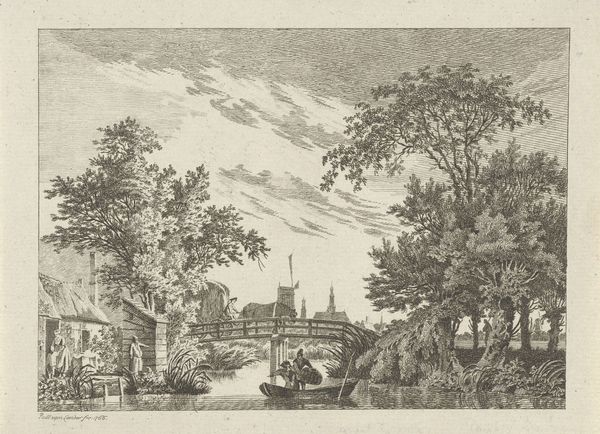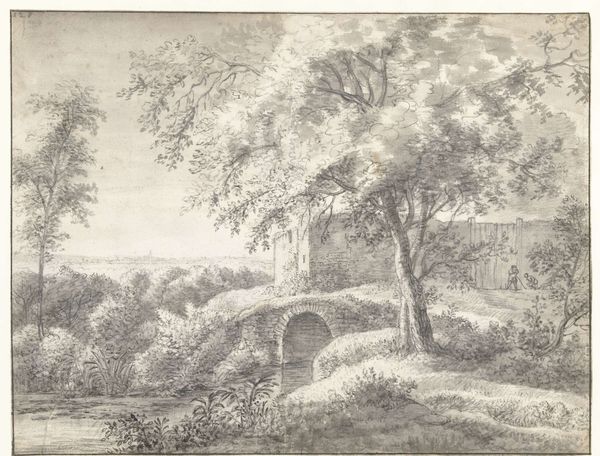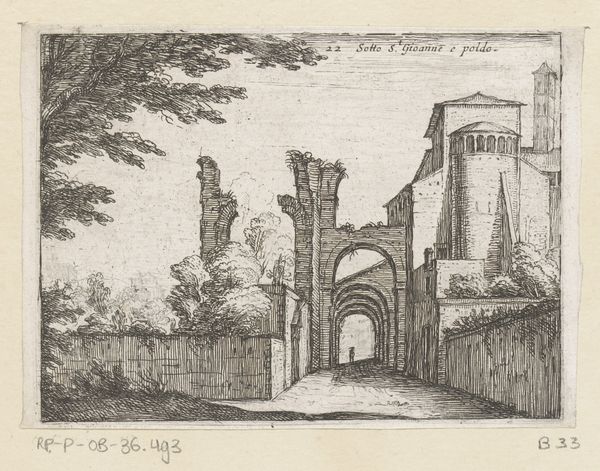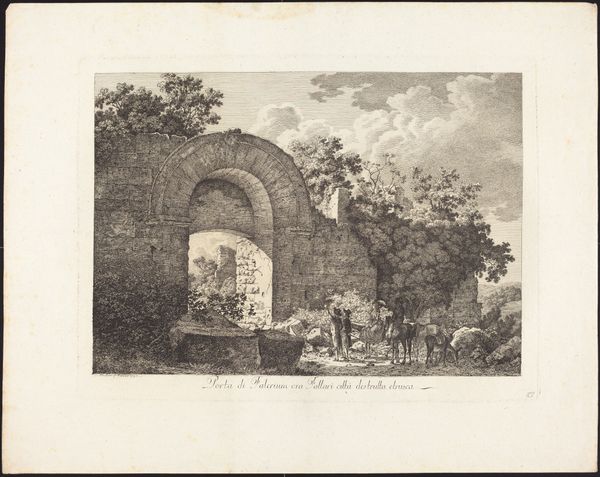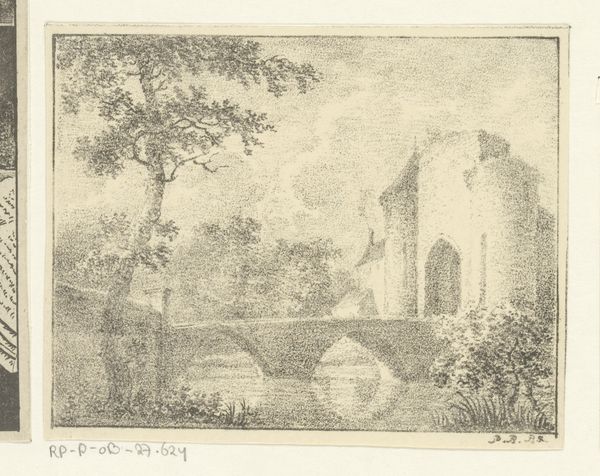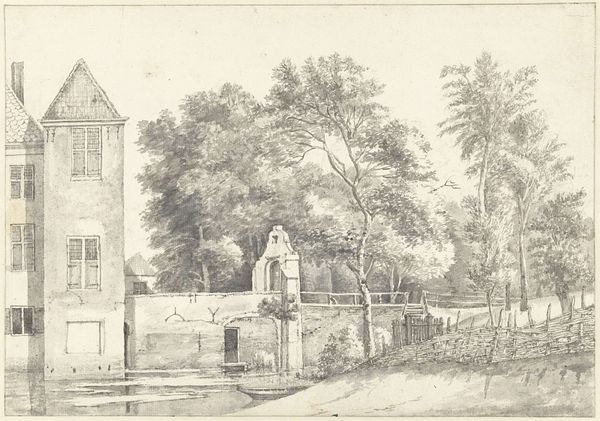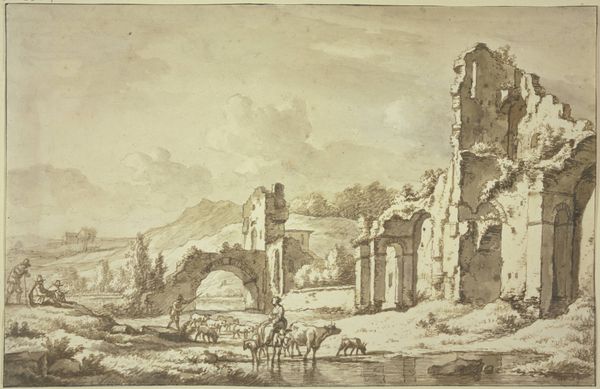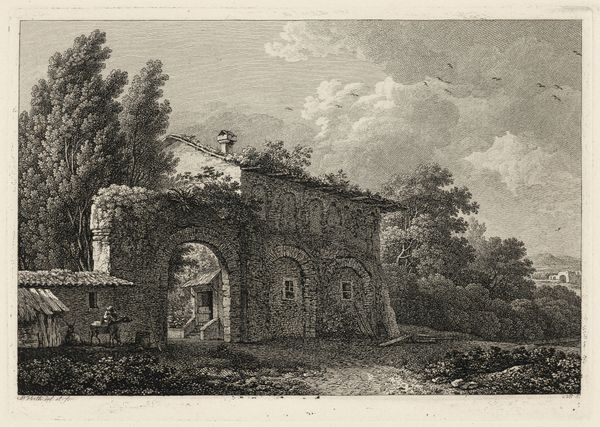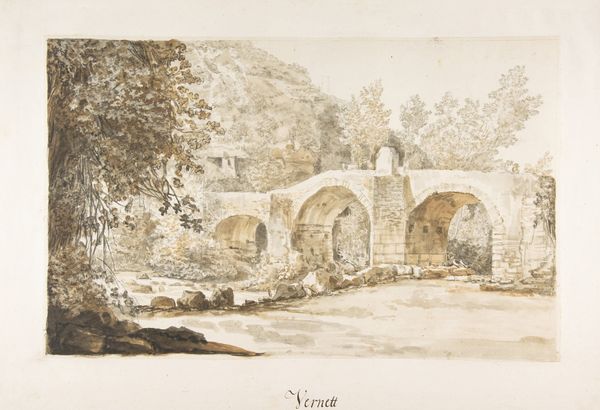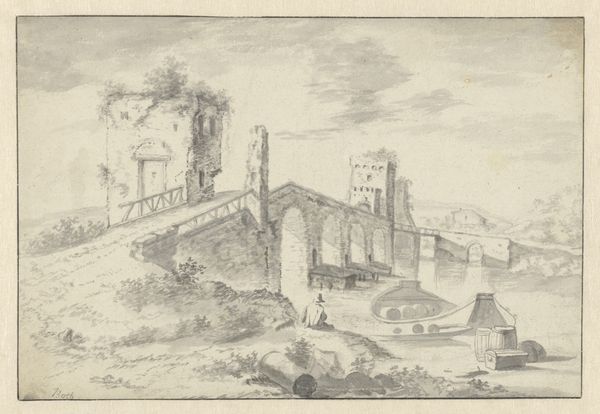
drawing, print, etching, paper
#
drawing
#
baroque
#
dutch-golden-age
# print
#
etching
#
landscape
#
paper
Dimensions: 153 × 127 mm (image); 156 × 128 mm (sheet)
Copyright: Public Domain
Curator: We’re looking at “The Ruined Town,” an etching by Anthonie Waterloo. It’s part of the Art Institute of Chicago's collection. Editor: My immediate impression is one of melancholy, a stillness. The etched lines, though delicate, contribute to an overall sense of decay, wouldn’t you agree? Curator: The composition certainly leads the eye to a somber place. Note the artist's meticulous application of line; the density in the foreground creates a tactile quality, a visual weight. Then, observe the perspectival play as the ruined structures recede. The texture is fascinating. Editor: Absolutely. That visual weight mirrors the symbolic weight, I think. Ruined structures, crumbling bridges... they are universal symbols of loss and the passage of time. The solitary fisherman and the travelers crossing the bridge enhance the feeling of a journey and of a fleeting human presence. Curator: An insightful reading. Considering the prevalence of such ruins in Dutch Golden Age landscape, it begs the question, are these ruins records of conflict or romantic conceits designed to highlight nature's indifferent strength? Editor: I lean towards the former, I suspect that the symbolic power here, that feeling of human diminishment when set against an unstoppable natural force, or the long view of time feels quite intentional to me. The sky and water, for instance, reflect the subdued tones in the architectural ruins. The water, which symbolizes purity, cleansing, but also reflects on what remains above, a mirroring to life itself, in its somber totality. Curator: I find it striking how the very materiality of the print itself adds another layer to these meanings. The etching, as a repeatable medium, implies the democratization of this vision, this meditation on transience. And that subdued range of tones; Waterloo achieves a profound sense of atmosphere through simple, effective design. Editor: Yes, he provides an almost philosophical memento mori. These visual symbols ask viewers to think of decay and what is lost over time in human achievements. I read Waterloo´s landscapes almost like meditations. Curator: Indeed, Waterloo's orchestration of form and tone creates an atmospheric meditation space in which all that which disappears from everyday conscious reality can appear and remind us, subtly, that the passage of time has meaning. Editor: Exactly! And the interplay of line and form and that stark tonality evokes timeless questions around loss and change.
Comments
No comments
Be the first to comment and join the conversation on the ultimate creative platform.
